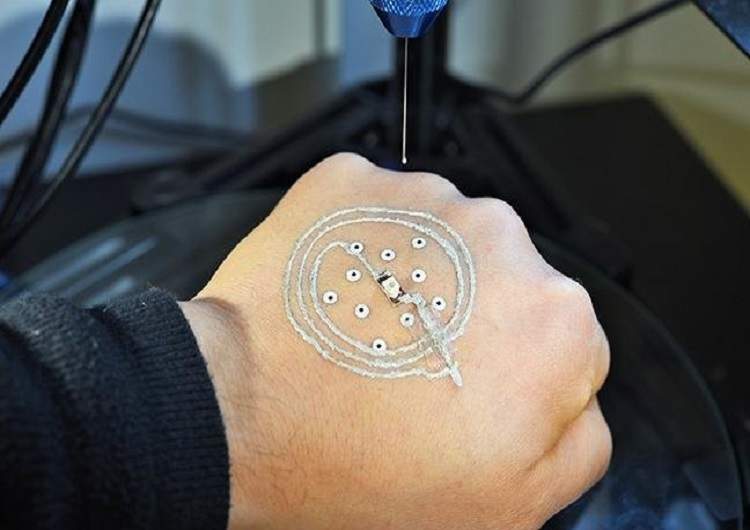
Researchers at the University of Minnesota have used a 3D printer to print electronics onto a human hand for the first time, opening up the possibility of printing temporary sensors on soldiers in the battlefield.
The sensors could be used to detect chemical or biological agents, or convert solar energy to charge essential electronics.
“We are excited about the potential of this new 3D printing technology using a portable, lightweight printer costing less than $400,” said University of Minnesota associate professor of engineering Michael McAlpine, the study’s lead author.
“We imagine that a soldier could pull this printer out of a backpack and print a chemical sensor or other electronics they need, directly on the skin. It would be like a ‘Swiss Army knife’ of the future with everything they need all in one portable 3D printing tool.”
A crucial aspect of the new printing technique is that the printer can adjust to small body movements while printing. Temporary markers are placed on the skin and the skin is scanned so that the printer can use computer vision and adjust to movements in real-time.
“No matter how hard anyone would try to stay still when using the printer on the skin, a person moves slightly and every hand is different,” said McAlpine. “This printer can track the hand using the markers and adjust in real-time to the movements and contours of the hand, so printing of the electronics keeps its circuit shape.”
How well do you really know your competitors?
Access the most comprehensive Company Profiles on the market, powered by GlobalData. Save hours of research. Gain competitive edge.

Thank you!
Your download email will arrive shortly
Not ready to buy yet? Download a free sample
We are confident about the unique quality of our Company Profiles. However, we want you to make the most beneficial decision for your business, so we offer a free sample that you can download by submitting the below form
By GlobalDataThe technique uses a specialised ink made from silver flakes, which can cure and conduct at room temperatures. Usually, 3D printing inks need to cure at temperatures of up to 100°C—far too hot for contact with skin.
Soldiers would be able to peel the electronics off with a pair of tweezers or wash it off with water.
McAlpine’s team also partnered with University of Minnesota Department of Paediatrics Dr Dean Jakub Tolar to explore how the technology could be applied for medical purposes. The team looked at how it could be used for wound healing and the direct printing of grafts for skin disorders. Using bio-ink, the team successfully printed cells on a mouse skin wound.
“I’m fascinated by the idea of printing electronics or cells directly on the skin,” said McAlpine. “It is such a simple idea and has unlimited potential for important applications in the future.”







